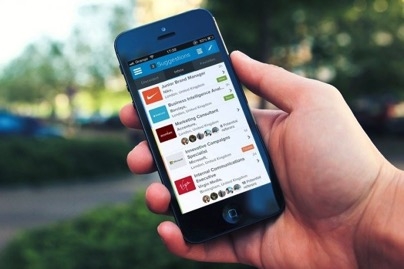We are always hearing how mobile phones use will take over the web. Indeed they are certainly gaining good market share. Figures we have seen; suggest that in 2010 around 10% of job seekers were using their phones to search and apply for jobs (US survey). However by 2014 this had risen to 50% (at least as stated in the survey - however see later).
So on these figures at least, making your careers site mobile friendly seems a no-brainer. However it's not quite as simple as that. Surveys that have looked at how people actually apply for jobs, show that when searching on a desktop PC, about 8% of searches result in a job application. This however drops to 1.5% when you look at candidates applying on mobile phones.

There are various reasons for this.
1. It's not a great experience applying on mobile phone given the small screen size. Also, many mobile phone users won’t have their CV to hand on their phone or will find it difficult to manage a CV file on their phone (e.g. the iPhone does not come with a file manager as standard).
2. From what we have seen and heard, we think many candidates will use both a PC/laptop as well as a phone when looking for a new job. Note, there are exceptions to this - in some markets access to a PC/laptop is not so readily available for many people e.g. parts of Asia. There candidates tend to rely on receiving job alerts by email rather than doing web searches. However in most western type markets, we think this holds true - at least for now. At the top of this post, we quoted a survey showing 50% of job seekers were using phones to search and apply for jobs. This can prove misleading unless qualified. It does not mean that 50% of ALL job search activity or applications are done on a phone. As the Survey we quoted above shows, application rates on mobiles are much lower than for those on desktop PCs. Given how hard it is to view a big list of search results or read a decent sized job description on a mobile we think this should not really be surprising. Most job search activity is likely to be done on a PC/laptop (where available). The lesson here is to think of candidates using both PC/Laptops and a phone - often in combination.
3. We very much encourage our clients to use short application forms that make best use of critical data. However there are some really horrible application forms out there. We have seen 10 and even 20 page application forms being used. Clearly anything of that ilk is going to be a real struggle on a phone. It is difficult to measure like for like. But one study we have seen, saw application rates drop by half when the number of questions in a form is doubled. It's the same if application forms take too much time. Similar studies suggest that after 15 minutes the candidate drop-off rate really accelerates. The lesson here is don’t get silly with your application forms. Also don’t expect a candidate on a mobile to spend as much time on filling in a form as when using a PC/Laptop.
Possible Solutions
So what can you do? There are very few recruiters who do not want to see a CV. Most in-house recruiters we see, are quite prepared to see a big drop-off in applications as long as they get the CV from those that do. However we should recognise that if a potential candidate comes across your vacancy whilst on a phone - given the data suggests that more and more of them will do so - there things you can do that will make things easier for them whilst on their phone. Doing so will increase your application rates and engagement.
Looking first at Application Forms and the CV. We think recruiters should consider amending their application processes to allow a candidate to at least register an interest while they are on a phone. Why make them go through a full application form at first contact? Instead, why not consider letting them apply or register without a CV in the first instance. Also, why not use different forms for mobile candidates and capture only basic details including their email address. Then you can use back-end systems to send followup emails and encourage/prompt them to add more information. You can also let them upload their CV at a later date - especially important if they were not able to readily do so when on the likes of an iPhone. In this way you will capture many more applications and have a sporting chance that many of them will - if they are still keen - upload their CV later. You will certainly get much more consideration as well as removing possible barriers to application.
Another strategy is to recognise that many candidates will use both desktop PC’s and mobiles in looking for jobs. Almost all Careers Advisors we come across strongly advise their candidates to tailor the CV to an individual job opportunity. When candidates are on a mobile and see your vacancy, they may thus want to upload their CV at a later time when they have had a chance to bring out their skills, knowledge and experience for your role. A strategy here is to make it easy for them to bookmark vacancies and come back at a later date, you could also create an “email yourself a link to this page”.